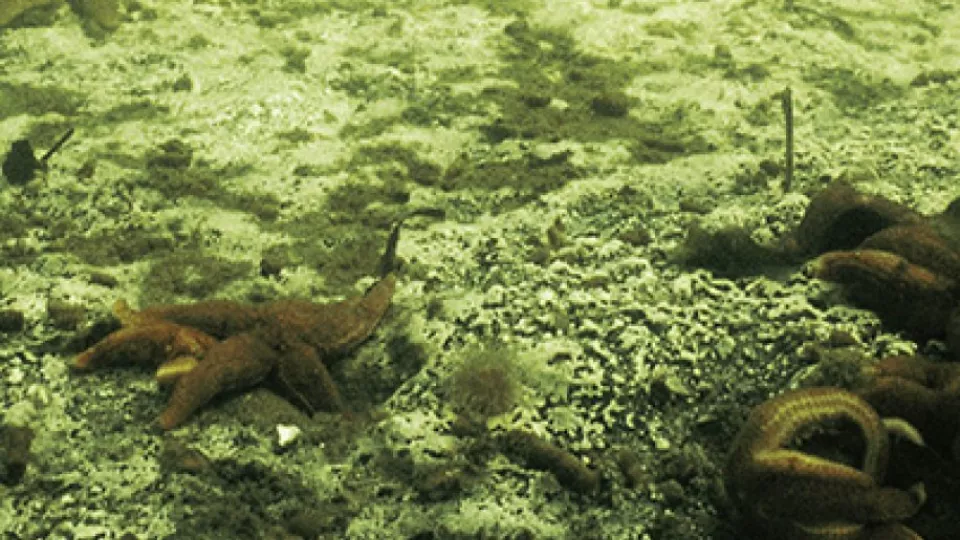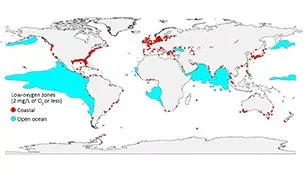“Sufficient oxygen in bottom waters is necessary for a well-functioning healthy ecosystem,” says Professor Daniel Conley at Lund University working together with an international team of scientists in the Global Ocean Oxygen Network (GO2NE). “Its decline can cause major changes in ocean productivity, biodiversity, and biogeochemical cycles as we have observed in the dead zones of the Baltic Sea.”
This oxygen loss – or deoxygenation – is one of the most important changes occurring in an ocean increasingly modified by human activities that have raised temperatures, increased CO2 levels and nutrient inputs, and have altered the abundances and distributions of marine species. Analyses of direct measurements at sites around the world indicate that oxygen minimum zones in the open ocean have expanded by several million km2 and that hundreds of coastal sites now have oxygen concentrations low enough to limit the distribution and abundance of animals and alter the cycling of important nutrients.
Low-oxygen zones are spreading around the globe. Red dots mark places on the coast where oxygen has plummeted to 2 milligrams per liter or less, and blue areas mark zones with the same low-oxygen levels in the open ocean. (Credit: GO2NE working group. Data from World Ocean Atlas 2013 and provided by R. J. Diaz):
Climate change is the key culprit in the open ocean. Scientists expect oxygen to continue dropping as the Earth warms. As the ocean gets warmer, the water holds less oxygen. In coastal water bodies, excess nutrient levels from land create algal blooms, which use up the oxygen as they die and decompose. In an unfortunate twist, animals also need more oxygen in warmer waters, even as oxygen is disappearing.
To keep low oxygen in check, the scientists recommend that the issue be addressed from three angles:
- Address the causes: nutrient pollution and climate change. To halt the decline in oxygen, the world needs to rein in both climate change and nutrient pollution. While neither issue is simple or easy, the steps needed to win can benefit people as well as the environment.
- Protect vulnerable marine life. With some low oxygen unavoidable, it is crucial to protect at-risk fisheries from further stress. This could mean creating marine protected areas or no-catch zones in areas animals use to escape low oxygen, or switching to fish that are not as threatened by falling oxygen levels.
- Improve low-oxygen tracking worldwide. Enhanced monitoring, especially in developing countries, together with numerical models will help pinpoint which places are most at risk and determine the most effective solutions.
Daniel Conley is a Professor at the Department of Geology (Geologiska institutionen) at Lund University. His research focuses on the changes that occur in marine systems because of human impact, nutrient inputs and climate.
Contact:
Daniel Conley, Professor, Department of Geology
Lund University
daniel [dot] conley [at] geol [dot] lu [dot] se (daniel[dot]conley[at]geol[dot]lu[dot]se)
+46 70 749 43 41
Publication: Declining oxygen in the global ocean and coastal waters
The Team:
The Global Ocean Oxygen Network (GO2NE) is a scientific working group organized by the Intergovernmental Oceanographic Commission, part of the United Nations Educational, Scientific and Cultural Organization (UNESCO). The group was established in 2016, its scientists come from around the world and are committed to providing a global and multidisciplinary view of deoxygenation, advising policymakers on countering low oxygen and preserving marine resources.

